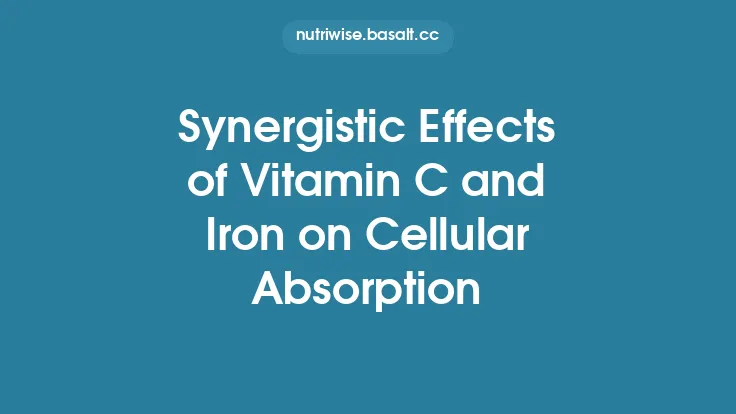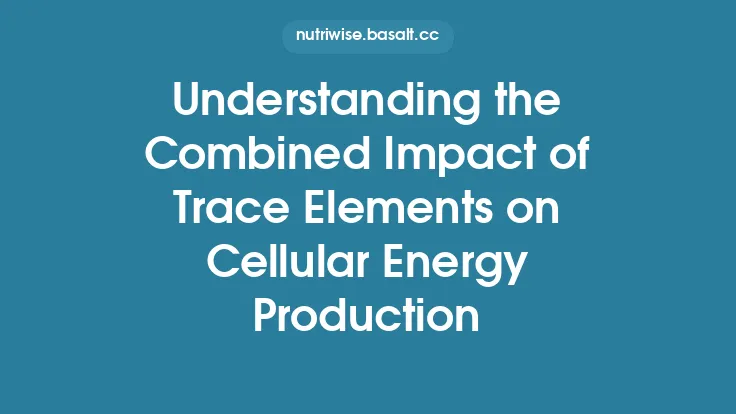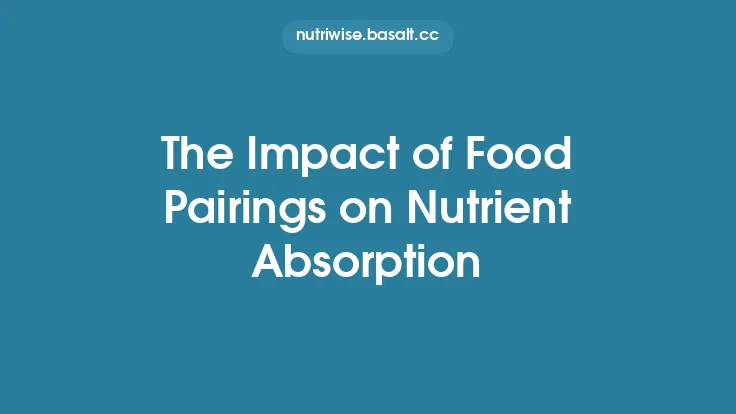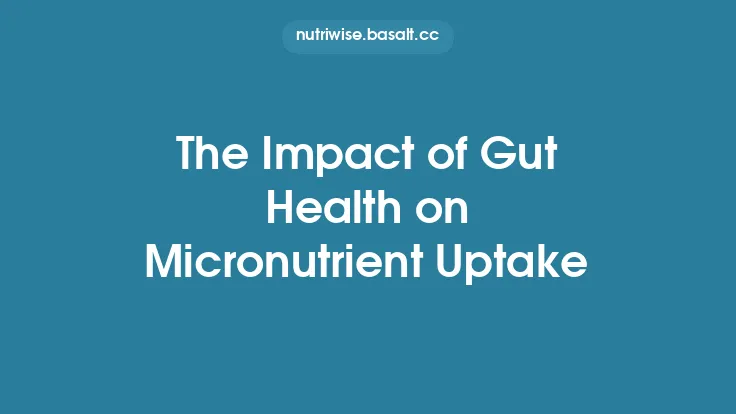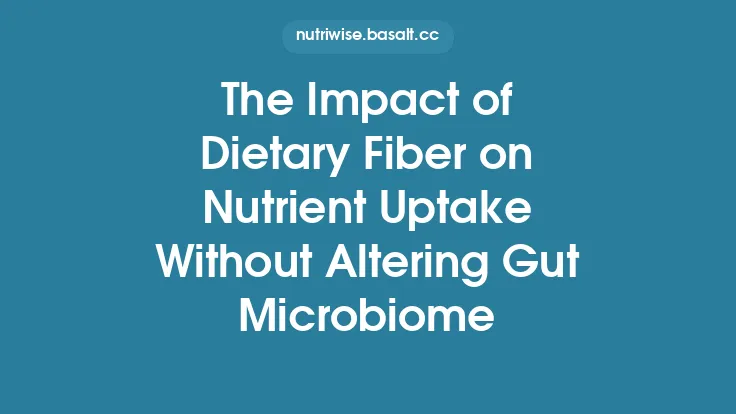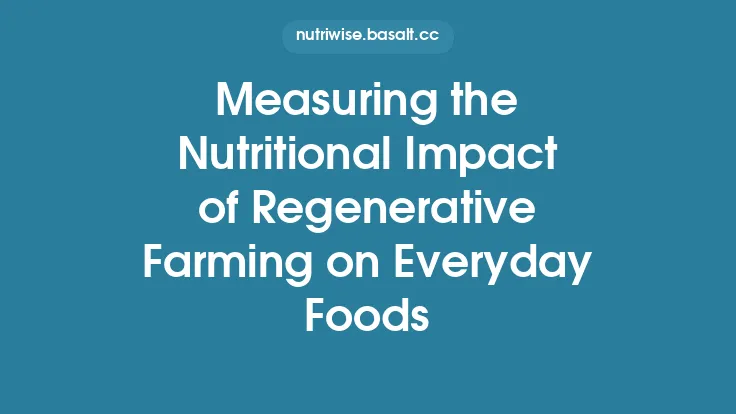Vitamin C (ascorbic acid) is one of the most potent dietary enhancers of iron absorption, particularly for the non‑heme form of iron that predominates in plant‑based foods. While the body’s iron‑handling system is complex, the specific interaction between vitamin C and iron is both biochemically elegant and practically relevant for anyone seeking to maintain optimal iron status without relying on supplements. This article delves into the mechanisms, optimal conditions, and evidence‑based recommendations for leveraging vitamin C to improve iron absorption, while also addressing safety considerations and emerging research directions.
The Chemistry Behind the Boost
Reductive Conversion of Ferric to Ferrous Iron
Dietary iron exists mainly as ferric (Fe³⁺) in plant foods. The intestinal epithelium, however, transports iron most efficiently in its ferrous (Fe²⁺) state via the divalent metal transporter‑1 (DMT‑1). Vitamin C acts as a strong reducing agent, converting Fe³⁺ to Fe²⁺ in the acidic environment of the stomach and proximal duodenum. This reduction not only makes iron more soluble but also protects it from precipitation with dietary inhibitors such as phytates and polyphenols.
Formation of Soluble Iron‑Ascorbate Complexes
Beyond simple reduction, vitamin C can chelate ferrous iron, forming soluble iron‑ascorbate complexes. These complexes remain in solution throughout the intestinal lumen, increasing the pool of absorbable iron that reaches the enterocyte surface. The stability of these complexes is pH‑dependent, being most effective in the mildly acidic to neutral pH range (≈ 3–6) encountered in the duodenum.
Influence on Enterocyte Iron Transporters
Experimental studies have shown that vitamin C can up‑regulate the expression of DMT‑1 and ferroportin, the primary iron exporter on the basolateral membrane of enterocytes. While the exact signaling pathways remain under investigation, the net effect is an increased capacity for iron uptake and release into the circulation.
Quantifying the Effect: How Much Vitamin C Is Needed?
Dose‑Response Relationship
Controlled feeding trials consistently demonstrate a dose‑dependent enhancement of non‑heme iron absorption with vitamin C. A typical pattern emerges:
| Vitamin C (mg) per meal | Approximate increase in iron absorption* |
|---|---|
| 0–20 | Baseline (no significant boost) |
| 30–50 | 1.5–2‑fold increase |
| 75–100 | 2–3‑fold increase |
| >150 | No further appreciable gain (plateau) |
\*Values represent relative change compared with a control meal lacking added vitamin C, measured using stable‑isotope techniques.
Practical Serving Sizes
- Citrus fruit: One medium orange (~70 mg vitamin C) or a half‑cup of fresh orange juice (~60 mg) provides a robust boost.
- Bell peppers: One cup of raw red bell pepper supplies ~190 mg, well beyond the plateau point, but still safe for most adults.
- Strawberries: A cup (~90 mg) is an easy addition to breakfast cereals or smoothies.
- Broccoli: One cup cooked (~100 mg) can be paired with grain‑based dishes.
The key is to co‑consume vitamin C‑rich foods within the same meal as iron‑containing foods; spacing them apart by more than two hours diminishes the synergistic effect.
Timing and Food Matrix Considerations
Co‑Consumption vs. Separate Meals
Vitamin C must be present in the lumen at the same time as iron to exert its reducing and chelating actions. Studies using isotopic labeling have shown that a 30‑minute lag between vitamin C intake and iron ingestion reduces the absorption enhancement by roughly 30 %. Therefore, integrating vitamin C into sauces, dressings, or side dishes is more effective than consuming it as a separate snack.
Interaction with Inhibitors
- Phytates (found in whole grains, legumes, nuts) bind iron and reduce its solubility. Vitamin C can partially overcome this inhibition by maintaining iron in a reduced, soluble form.
- Polyphenols (tea, coffee, certain fruits) form strong complexes with iron. A 100 mg dose of vitamin C can offset the inhibitory effect of up to 200 mg of tea polyphenols, but the protective capacity is not unlimited.
- Calcium (dairy, fortified foods) competes for transport pathways. While calcium’s inhibitory effect is modest compared with phytates, concurrent high calcium intake can blunt the vitamin C‑mediated boost. A practical approach is to separate calcium‑rich foods by at least an hour from iron‑rich meals.
Cooking Methods
Heat can degrade vitamin C, reducing its efficacy. To preserve vitamin C when cooking iron‑rich vegetables:
- Steaming for short periods (≤ 5 min) retains > 80 % of vitamin C.
- Microwaving with minimal water also preserves the nutrient.
- Raw incorporation (e.g., adding fresh lemon juice to cooked lentils) is the most reliable method to ensure maximal vitamin C availability.
Clinical Evidence: From Bench to Table
Controlled Feeding Studies
Multiple randomized crossover trials have quantified the impact of vitamin C on iron status markers. A landmark study in premenopausal women showed that adding 50 mg of vitamin C to a daily meal containing 12 mg of non‑heme iron increased serum ferritin by 15 % over a 12‑week period, without altering hemoglobin levels (the latter remained within normal range throughout).
Population‑Based Observations
Epidemiological data from large cohorts (e.g., NHANES) reveal a positive correlation between dietary vitamin C intake and serum ferritin, independent of total iron intake. Adjusted models accounting for age, sex, and inflammation markers still demonstrate a statistically significant association, supporting the mechanistic findings.
Special Populations
- Vegetarians and vegans: Because their diets rely heavily on non‑heme iron, vitamin C intake is a critical determinant of iron status. Intervention trials adding a modest 30 mg of vitamin C to meals have shown improvements in iron absorption comparable to those achieved with modest iron supplementation.
- Pregnant individuals: The increased iron demand of pregnancy can be partially met by strategic vitamin C consumption. A pilot study reported that a daily 100 mg vitamin C supplement, taken with iron‑rich meals, reduced the incidence of iron‑deficiency anemia by 20 % compared with a control group receiving iron alone.
Safety and Upper Limits
Tolerable Upper Intake Level (UL)
The Institute of Medicine sets the UL for vitamin C at 2,000 mg per day for adults. Intakes below this threshold are generally well tolerated. Gastrointestinal upset (e.g., diarrhea, abdominal cramps) is the most common adverse effect at high doses, but these symptoms are reversible upon dose reduction.
Interaction with Iron Overload Conditions
Individuals with hereditary hemochromatosis or other iron‑loading disorders should exercise caution. While vitamin C does not cause iron overload on its own, its ability to increase absorption could exacerbate existing iron accumulation. Clinical guidance typically recommends limiting supplemental vitamin C to dietary levels (≤ 200 mg per meal) and monitoring iron indices regularly.
Oxidative Considerations
Iron catalyzes the formation of reactive oxygen species via the Fenton reaction. In theory, excessive iron absorption could increase oxidative stress, but real‑world data show that normal dietary ranges of vitamin C‑enhanced iron absorption do not elevate markers of oxidative damage in healthy individuals.
Practical Recommendations for Everyday Use
- Pair iron‑rich foods with a vitamin C source at each main meal
- Example: Add a squeeze of lemon juice to a spinach salad with chickpeas.
- Example: Serve a bowl of lentil soup with a side of orange slices.
- Aim for 30–60 mg of vitamin C per iron‑containing meal
This range reliably boosts absorption without approaching the UL.
- Choose fresh or minimally processed vitamin C sources
Fresh fruit, raw vegetables, and freshly squeezed juices retain the most active ascorbic acid.
- Avoid high‑phytate or polyphenol beverages during iron‑rich meals
If you enjoy tea or coffee, schedule them at least 30 minutes before or after the meal.
- Consider timing with calcium
Separate calcium‑dense foods (e.g., dairy) from iron‑rich meals to prevent competitive inhibition.
- Utilize cooking methods that preserve vitamin C
Short steaming, microwaving, or adding raw vitamin C‑rich ingredients after cooking are optimal.
Emerging Research and Knowledge Gaps
- Genetic Variability in DMT‑1 Expression
Preliminary data suggest that polymorphisms in the SLC11A2 gene (encoding DMT‑1) may modulate the magnitude of vitamin C‑induced absorption. Larger cohort studies are needed to confirm these findings and to develop personalized nutrition strategies.
- Microbiome Interactions
The gut microbiota can metabolize both iron and vitamin C, potentially influencing their bioavailability. Ongoing metagenomic studies aim to elucidate whether specific microbial profiles enhance or diminish the vitamin C effect.
- Fortified Food Matrices
Food technologists are exploring microencapsulation of vitamin C to protect it during processing while still delivering its enhancing effect. Early trials with fortified grain products show promising absorption rates, but long‑term stability and consumer acceptance remain under investigation.
- Synergy with Other Micronutrients
Research is evaluating whether concurrent intake of certain B‑vitamins (e.g., B12, folate) or vitamin A further amplifies iron absorption beyond the vitamin C effect alone.
Bottom Line
Vitamin C is a uniquely effective, food‑based tool for improving the absorption of non‑heme iron. By acting as a reducing agent, forming soluble complexes, and modulating intestinal transporters, it can increase iron uptake two‑ to three‑fold when consumed in appropriate amounts alongside iron‑containing foods. The practical take‑home messages are straightforward: incorporate a modest dose of vitamin C (30–60 mg) into each iron‑rich meal, avoid timing conflicts with strong inhibitors, and choose preparation methods that preserve the vitamin’s potency. When applied consistently, this strategy supports healthy iron status across the lifespan while avoiding the need for pharmacologic iron supplementation in most individuals.
